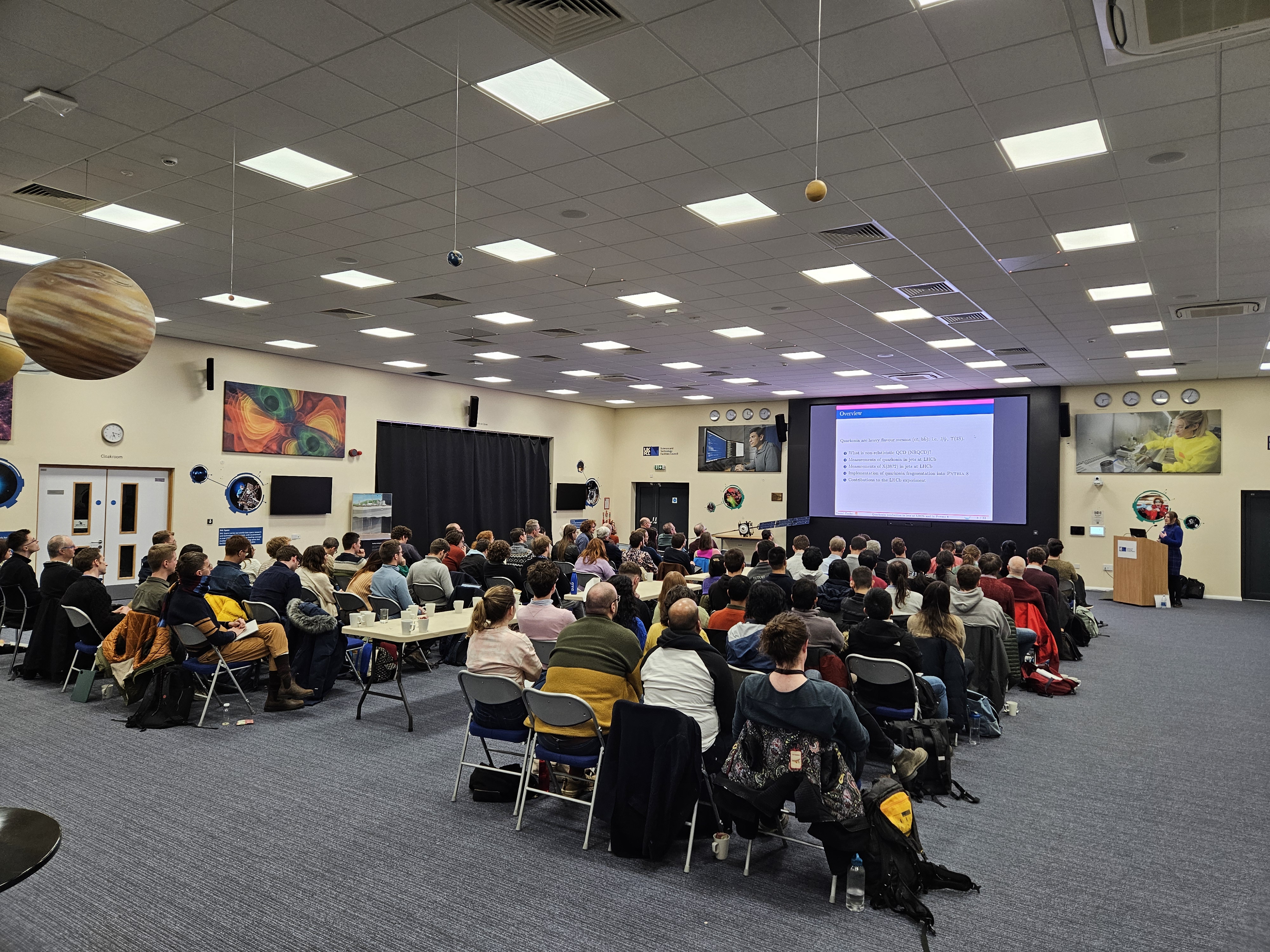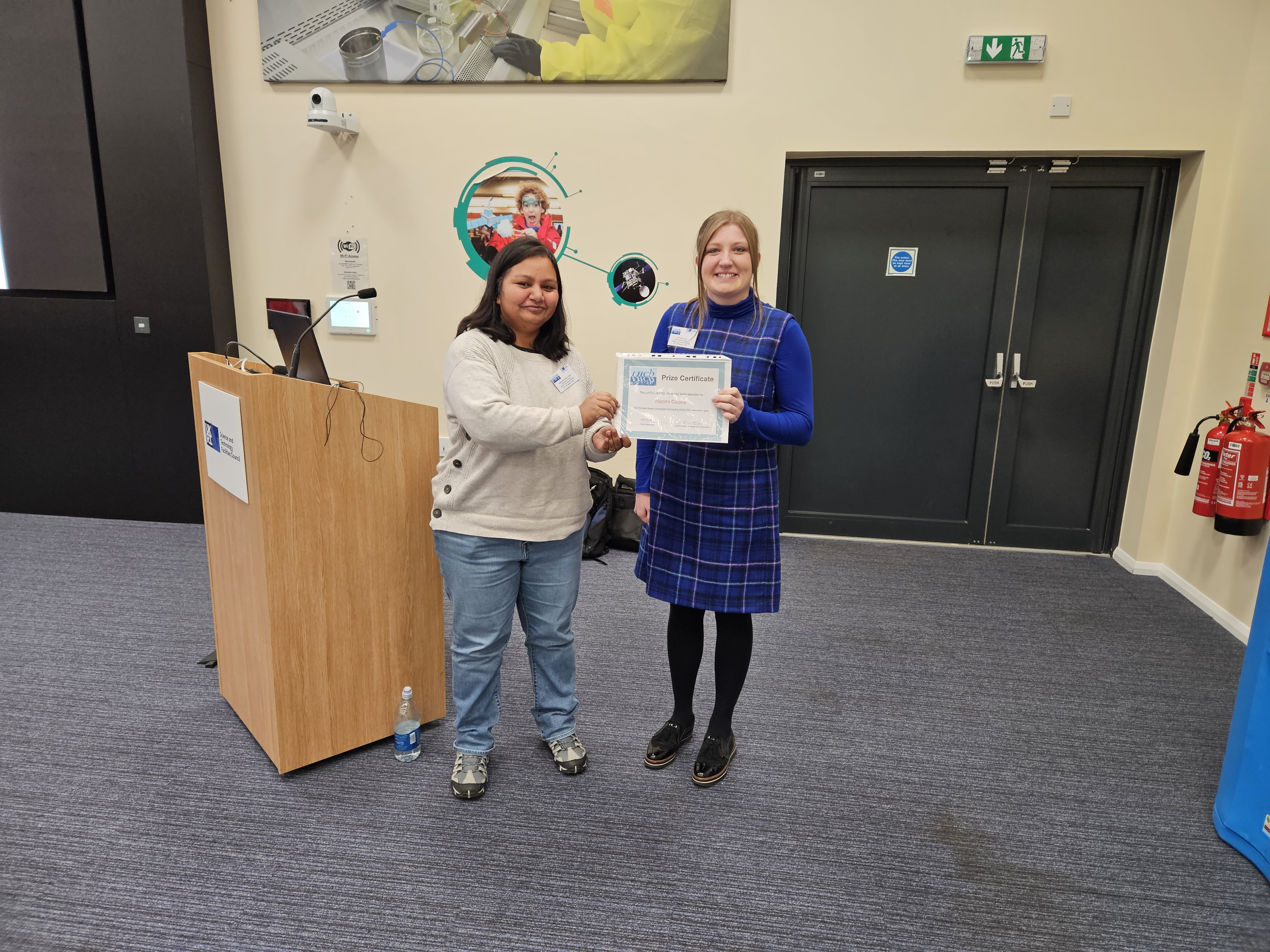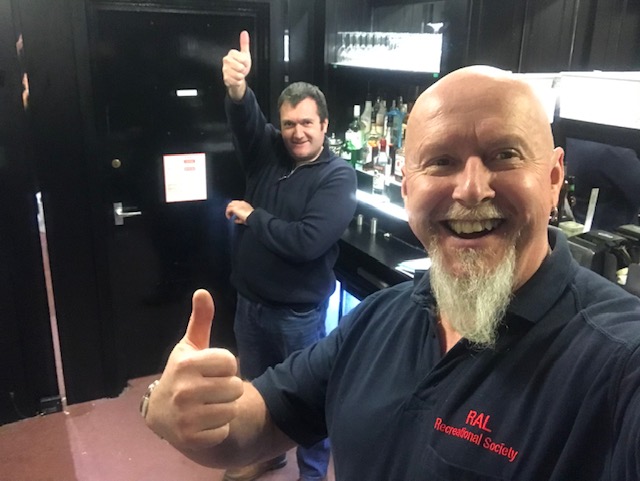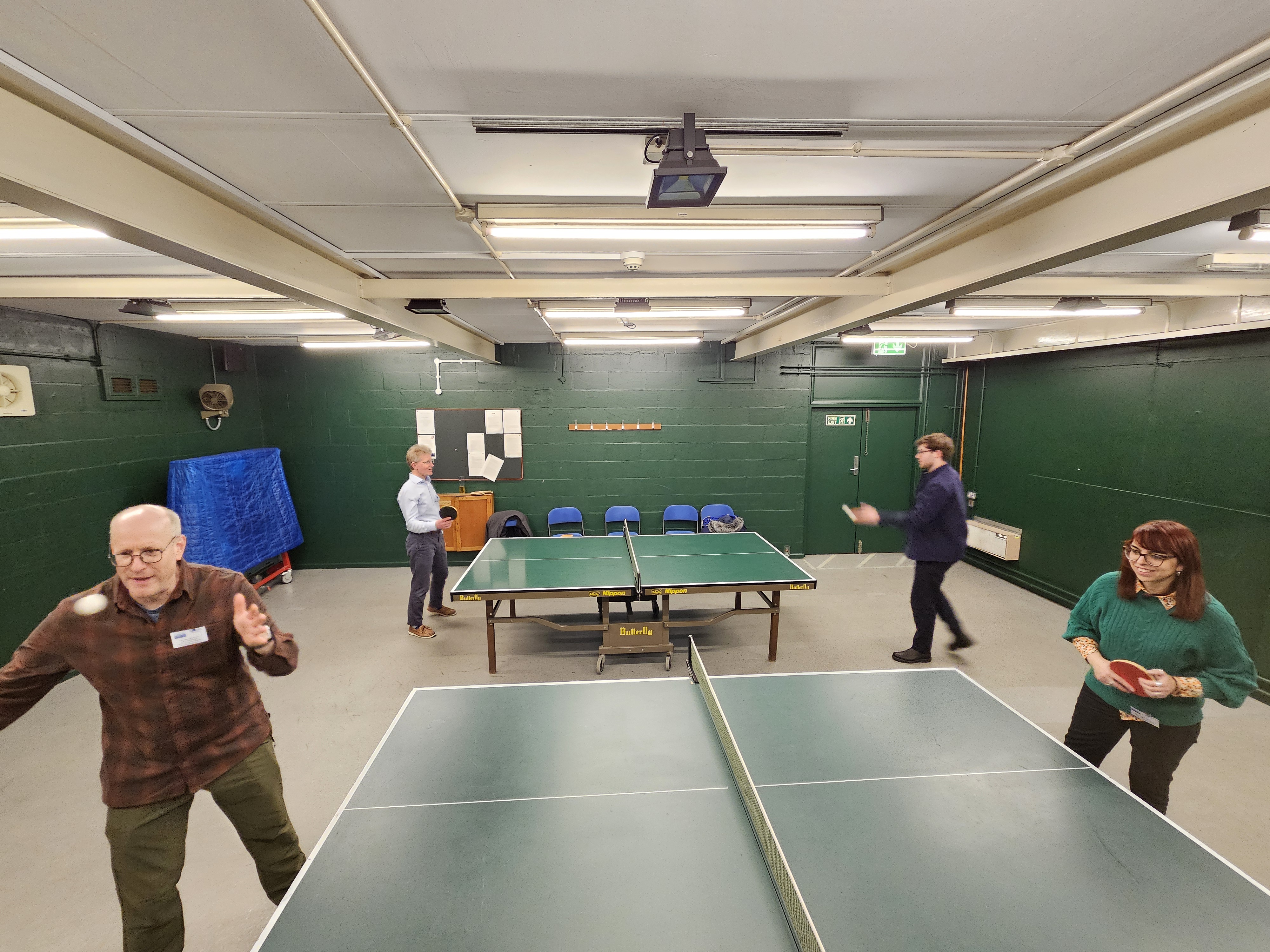Every January, the UK members of the major CERN experiments hold annual collaboration meetings, to discuss how they’ll contribute to the research planned for the year ahead. This year, LHCb held theirs at the Rutherford Appleton Laboratory Visitors’ Centre from Monday 8th to Wednesday 10th January.

LHCb UK meeting in the Visitors' Centre, Rutherford Appleton Laboratory
What is LHCb?
One of the four major experiments sat on the ring of the Large Hadron Collider (LHC), LHCb was designed to study particles containing the beauty (b) quark, known as b-hadrons. Understanding more about the b-quark could help us understand why our universe is made almost entirely of ‘ordinary’ matter, with very little of its opposite, antimatter.
Traditional laws of physics predict that matter and antimatter should be produced symmetrically – in equal amounts. Matter and antimatter particles annihilate each other when they meet, so if equal amounts had been produced at the Big Bang, all particles would have annihilated each other and left us with a universe empty of everything but energy. As you’re currently reading this article, you can deduce this didn’t happen – about 99.99% of the universe is made of ‘ordinary’ matter, including you.
One partial explanation is Charge-Parity (CP) violation, the idea that the laws of physics don’t apply in the same way to matter and antimatter particles. LHCb observes and studies CP violation in particle collisions to further understand the phenomenon.
LHCb has also discovered new exotic particles, including a new kind of “pentaquark” and the first-ever pair of “tetraquarks”, which included a new type of tetraquark, in 2019. Observing ‘heavy hadrons’ – particles made of lots of quarks - helps physicists better understand how quarks bind together into composite particles like these.
LHCb in the UK
Over 200 UK researchers contribute to the work of the experiment, including a team from the Particle Physics Department at RAL. The group of about 10 researchers has played a key role in developing the Rich Imaging Cherenkov (RICH) detectors, which help the experiment identify charged hadrons, and contributes significantly to the physics analysis, enhancing the discovering potential of the experimental data.
During their time at RAL, the UK LHCb community discussed current research and the progress towards an upgraded LHCb. ‘LHCb Upgrade 2’ is due to start data taking in 2035 and will allow the experiment to take advantage of the higher number of particle collisions provided by the LHC.
One particular highlight was the presentation of the annual LHCb UK PhD thesis prize, awarded to Naomi Cooke from the University of Birmingham. You can read her thesis on "Measurements of Quarkonia and Tetraquark Production in Jets at LHCb" here.

Dr Sneha Malde, LHCb-UK Physics Coordinator (Left) presents the LHCb UK thesis prize to Dr Naomi Cooke (Right)
Attendees also got the chance to get to know each other at lunches in the visitor centre and the collaboration dinner, held at Ridgeway House. After-dinner drinks and games were also held at the RecSoc centre, where darts, ping-pong and pool all proved popular.


RecSoc bar staff in good spirits Ping-Pong
